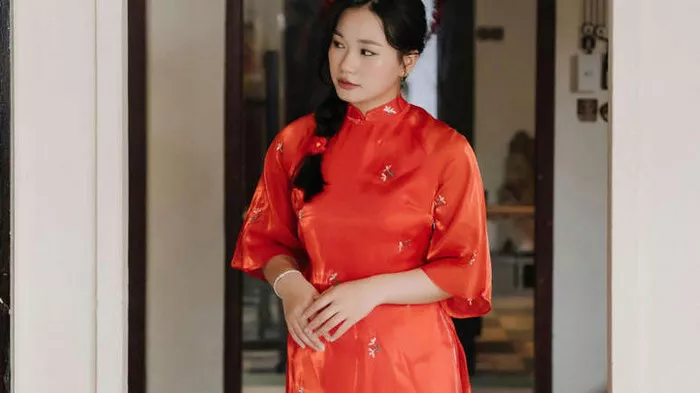From vibrant fabrics to intricate designs, traditional clothing worn by women around the world reflects deep cultural roots, artistry, and identity. These garments not only showcase exquisite craftsmanship but have also inspired Western fashion in significant ways. Below is a look at 20 stunning examples of traditional attire worn by women across the globe.
1. Sari – India
The sari is a graceful and versatile piece of clothing consisting of a long fabric draped around the body and over one shoulder. Typically worn over a blouse and underskirt, saris come in an endless variety of styles, colors, and embellishments, making them suitable for both everyday wear and special occasions.
2. Hanbok – South Korea
The hanbok, a traditional Korean outfit worn for over 2,000 years, consists of a vibrant jacket paired with a high-waisted, full-length skirt. It’s commonly worn during celebrations, holidays, and formal events, symbolizing elegance and tradition.
3. Kebaya – Indonesia
A kebaya is a delicate, elaborately embroidered blouse made from light fabrics like lace, cotton, or gauze. This garment is traditional in Indonesia and also common in Brunei, Malaysia, Singapore, and parts of Thailand. It’s often worn with a batik or sarong.
4. Kimono – Japan
Japan’s national dress, the kimono, is a T-shaped robe that wraps around the body and is secured with a wide sash known as an obi. While now reserved for special ceremonies and cultural events, the kimono remains a strong symbol of Japanese identity.
5. Kaftan – West Africa
The kaftan is a long, flowing dress that originated in ancient Mesopotamia and remains popular in West African countries. Its loose fit and colorful patterns make it both practical and beautiful, suitable for festive and religious gatherings.
6. Armenian Dress – Armenia
Traditional Armenian dresses are heavily embroidered and often made of silk. These outfits are influenced by Turkish, Persian, and Mediterranean cultures and are typically accessorized with shawls, jewelry, and ornate headdresses.
7. Croatian Dress – Croatia
Worn on significant occasions such as weddings and festivals, the Croatian national costume includes a white embroidered blouse, a full-length skirt, and a decorative overskirt. Variations of this costume are also found in Bosnia and Herzegovina, Serbia, and parts of Hungary.
8. Dirndl – Germany
The dirndl is a traditional outfit from Alpine regions including Germany, Austria, and Switzerland. It consists of a tight-fitting bodice, a low-cut blouse, a high-waisted skirt, and an apron. It is most famously worn during Oktoberfest celebrations.
9. Ao Dai – Vietnam
The ao dai, a Vietnamese national dress, features a silk tunic with slits on the sides paired with flowing pants. This elegant and modest outfit traces back to the 18th-century Vietnamese aristocracy and is still worn during formal events and ceremonies.
10. Sinh – Thailand
Popular in Thailand and Laos, the sinh is a tube skirt worn with a tucked-in blouse and waistband. Its detailed patterns and bright colors make it a favorite for special occasions and cultural festivities.
11. Flamenco Dress – Spain
The flamenco dress is closely associated with the iconic Spanish dance. It features a floor-length, ruffled skirt and is usually worn during the Feria de Abril festival in Seville, showcasing regional flair and celebration.
12. Sardinian Traditional Dress – Italy
In Sardinia, Italy, traditional women’s clothing reflects Moorish and Spanish influences. The ensemble includes a pleated skirt, an embroidered blouse, a bonnet, and a veil, representing centuries of cultural fusion.
13. Coiffe – France
In Brittany, France, the coiffe is a distinctive headdress made of starched lace, rising nearly a foot above the head. It’s a proud symbol of Breton heritage and is typically worn with traditional regional dresses during festivals.
14. Herero Dress – Namibia
Inspired by Victorian fashion, the Herero dress includes a full-length skirt, puffed sleeves, and a fitted bodice, often completed with a horn-shaped hat. It has become a powerful cultural symbol for the Herero people of Namibia.
15. Kolt – Finland
The kolt is a traditional outfit worn by the Indigenous Sami people across Northern Europe, including Finland. The dress typically features bold red, green, yellow, and blue patterns, reflecting centuries-old heritage and environmental ties.
16. Kira – Bhutan
In Bhutan, women wear the kira—a long, rectangular dress paired with a blouse and a scarf. This national dress is not just ceremonial; it’s a required part of daily attire for women in government and schools.
17. Sarafan – Russia
A traditional Russian peasant dress, the sarafan features a long, loose skirt with a simple bodice. Inspired by Viking styles, this garment became a staple in rural Russia from the 14th century onwards and is still worn during folk events.
18. Cheongsam – China
The cheongsam, or qipao, is a slim-fitting, high-collared dress made from silk, often embroidered with traditional patterns. It became a symbol of feminine elegance in 20th-century China and is still worn during formal events.
19. Bunad – Norway
Bunads are Norwegian traditional dresses with different styles based on regional origins. They typically consist of a bodice, blouse, long skirt, and apron. These outfits are worn on national holidays, weddings, and other formal occasions.
20. Abaya – Middle East
The abaya is a modest, long, flowing black robe worn by women in many Middle Eastern countries. Though traditionally simple, modern abayas now include embroidery and fashionable updates while maintaining cultural significance.
Related Topics
- SNL Mocks Forever 21’s Fall With ‘Forever 31’ Spoof, Highlighting the Brand’s Struggles to Keep Up with Consumers
- Aussie Mum Sparks Debate Over Gender Stereotypes in Kids’ Clothing at Best & Less
- How to Style Women’s Wedge Shoes for Formal Events

